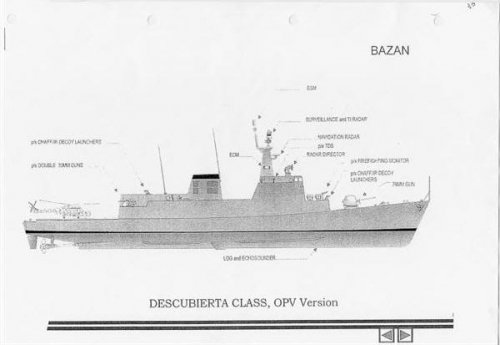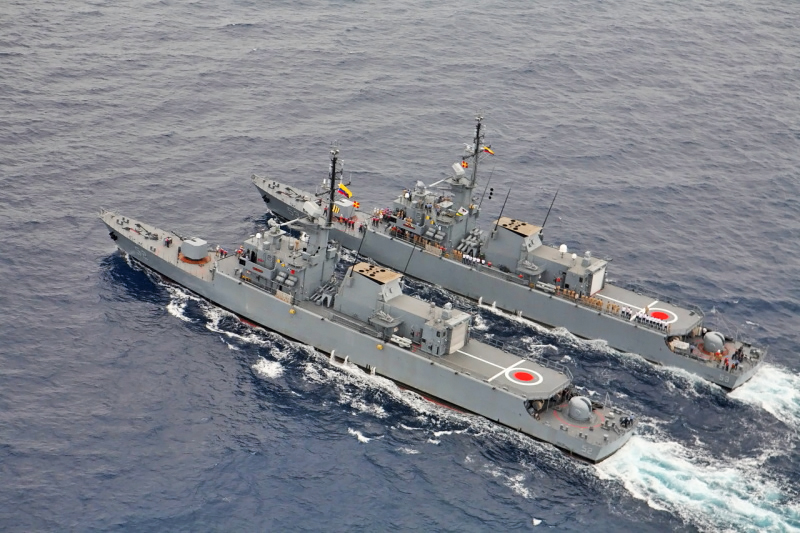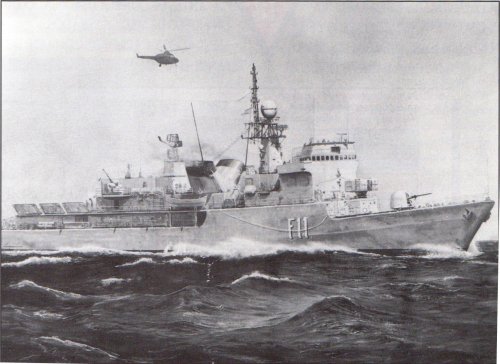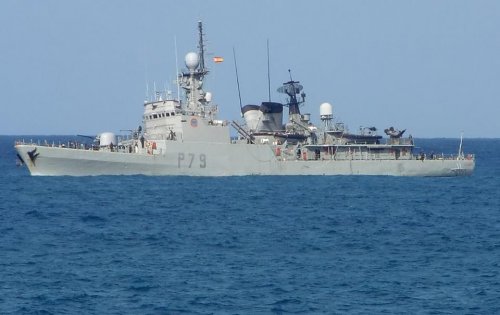On the subject of the South African corvettes, I remember reading in Janes and Proceedings in the late 1980's that South Africa was about to embark on a local construction programme.
I have to ad lib here as I have no access to my library, but both publications writeups suggested that these local vessels were to be armed with a mixture of guns and missiles, with perhaps the Albatross SAM, and that vessels of around 1500 tons were well within the scope of local industry.
Looking at these descriptions got me thinking, just as Sealord implied, about what sort of weaponry and capabilities would have been shipped. Clearly the above mentioned publications were just speculating on the actual design, but certain assumtions can be fairly accurate I reckon:
These vessels were to basically provide better blue water capabilities than the strike craft. So the vessels would have been armed with the 76mm Oto Melara gun, single or double installations. The SSM complement would logically and obviously been the Skerpioen, or Gabriel, as also used on the Strikecraft. The referral in the publications above to the Albatross SAM is very innaccurate IMHO, and most likely was simply chosen as the most likely of a bunch of unlikely candidates due to the arms embargo. However, the SAHV was just coming around, and this was developed to be used in land (Rooikat) and sea applications. (Umkhonto)
It would have been inconceivable to turn these boats out un-equipped with a SAM, so the SAHV/Umkhonto was probably part of the equipment plan at some stage. I'd imagine that the very same would apply to the twin 35mm DPG that was again designed for dual land (rooikat) and sea (Valour Class) purposes. The development timeframe of these systems was eased as a result of the ending of Apartheid and the defence cuts. Almost every SAN warship was also equipped with 2 x 20mm cannon.
The South African Navy was concerned that the loss of the excellent ASW capabilities garnered from decades of excercises with the Royal Navy could be lost. Indeed, this was one of the primary reasons for the Corvette programme. So it stands to reason that some ASW capabilities would be shipped. I imagine triple Mk32 launchers, of which there were many in stock. The Limbo's would have not been feasible.
With this also in mind,I simply cannot imagine this boat without a helicopter.
Now, the SAAF did still operate Westland Wasps, but these were long in the tooth, so I'd imagine the only other two candidates to be the Alouette or the Oryx (Super Puma). The only vessel to operate the Alouette in the SAN is the SAS Protea. The Puma/Oryx, with foldable rotor, radar, and flotation bags has been used on SAN ships before. There seems to have been a programme toward a basic naval Oryx/Puma, so this seems to be the most logical type. Indeed, the Valour class have had Oryxes land on their flight decks, and the hangar height is certainly high enough to accommodate them, although I'm unsure of their hangar length.
So, with this in mind, we speculatively have a vessel that is equipped with 76mm, 35mm, and 20mm guns. Skerpioen/Gabriel SSM and SAHV/Umkhonto SAM, triple Mk32 torpedo tubes and Oryx/Puma helicopter. Indeed, both later Bazan and Yarrow proposals mirrored this relatively closely, with exceptions here and there.
The 2 articles above state only that vessels of around 1500 tons would easily be within local industry's scope, which is fairly obvious as the 13 000 ton SAS Drakensburg had just been launched at Sandock Austral. I suspect both articles have the same source with the same speculative assumtions. We now have the luxury of hindsight.
So what would be the size of a vessel thus equipped, and built to operate in the heavy seas off the South African coast? What were Bazan and Yarrow's proposal sizes and tonnage for the slightly later competition? The Valour Class are around 3700 tons. They were also classed as Corvettes originally, which seems to be a political ploy. I suspect these South African corvettes would have been more like Frigates, as they were sometimes described.
Comments on my reasoning, or lack thereof?





